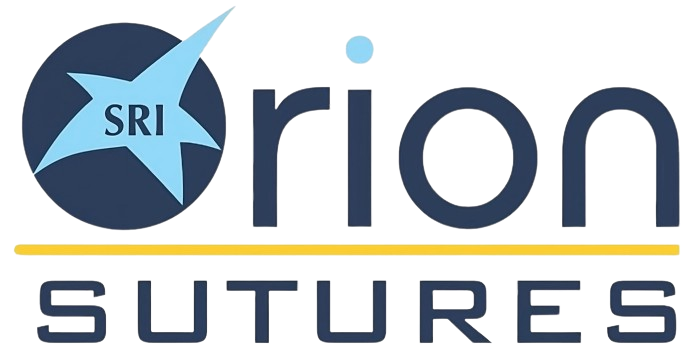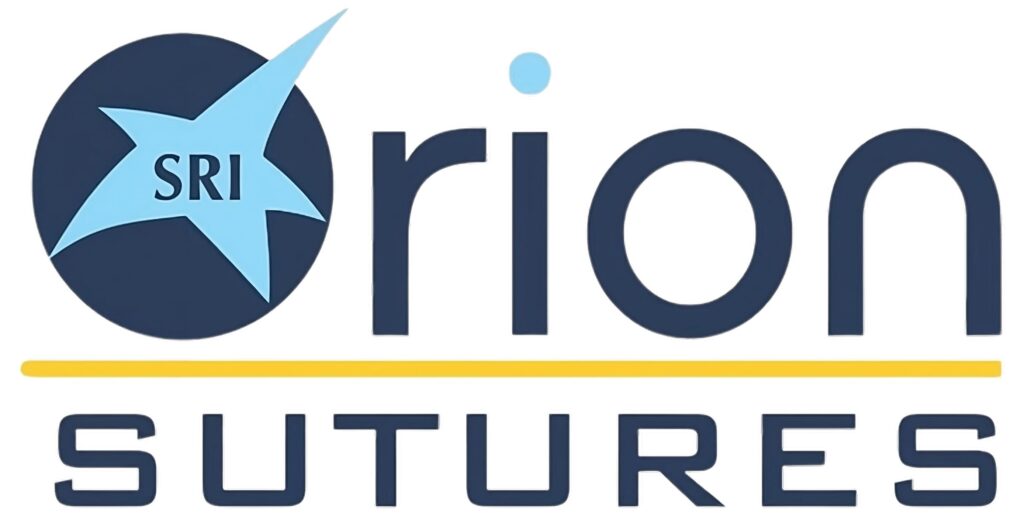Sutures are medical devices that are used to repair cuts in the skin tissue. They hold the tissues together when there is a breakage in skin integrity after an injury or surgery. They are usually thread-like. They are of different shapes, sizes and are used according to the type of cuts. Suturing is crucial for the healthy recovery of patients. Sutures are classified into various types. They can be Monofilament or braided. They can be natural and synthetic. They can be absorbable and non-absorbable. Absorbable sutures are the ones that are not removed by the doctor. They are digested by the enzymes present in our body. There are many types of absorbable sutures such as Gut, Poliglecaprone, Polydioxanone, and polyglactin. Non-absorbable sutures are removed by the doctor after some time. There are many types of Non-absorbable sutures, such as polypropylene, polyethene, and polyamide sutures.
Non-Absorbable sutures
Non-absorbable sutures are the sutures that are to be removed by the doctor after a required period. They provide long-term protection to the tissues. They remain separated from the inflammatory processes of the tissues until they are manually removed from the skin. Some commonly used Non-absorbable sutures are Nylon, Prolene, and silk. These sutures are mainly used in tissues that take time to heal. These are used to suture tissues such as fascia, tendons, abdominal wall, or vascular anastomoses.
Types and their Advantages & Disadvantages:
Silk sutures
These sutures are being used for a very long time. Silk sutures are synthetic man-made sutures. Silk Sutures are best for use in Dental Surgery, It is also available in reels of 25meters or 10meter packing
• Advantages: Silk sutures have excellent knot security. They are easy to be handled; therefore, they can also be used as a temporary suture during surgery. They rarely elicit a tissue reaction. They are soft and comfortable.
• Disadvantages: Silk tends to enter the tissues, which makes it painful to remove. It has low tensile strength, so it can break under high tension.
Stainless steel wire sutures
These are the sterile non-absorbable sutures used widely in abdominal wound closure and orthopaedic procedures.
• Advantages: They are inexpensive, soft, and malleable. The main advantage of these sutures is that they do not promote infection. They are strong and flexible sutures.
• Disadvantages: The stainless-steel wires are springy in nature.
Polypropylene sutures
They are synthetic non-absorbable monofilament sutures.
• Advantages: These sutures provide long dermal support. They elicit less tissue reaction and are used in skin and percutaneous as well as subcuticular pull-out closures.
• Disadvantages: They have poor knot security.
Polyethylene sutures
These sutures are non-absorbable surgical sutures.
• Advantages: These are soft and gentle, so they can be used on tissues easily. They have high knot security.
Polyamide sutures
Polyamide sutures are synthetic surgical sutures. It is composed of caprolactam.
• Advantages: It has low tissue reactivity. It is widely used for general soft tissue approximation. It can also be used in cardiovascular and neurological procedures.
• Disadvantages: It is difficult to handle and to tie.
Out of these non-absorbable sutures, polyamide nylon sutures in India, Black Braided Silk are soft and gentle and have minimal tissue response. Multifilament polyamide sutures are best for skin approximation.

